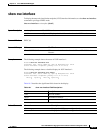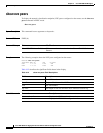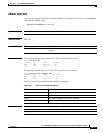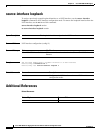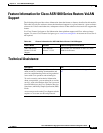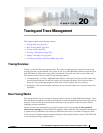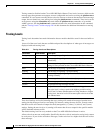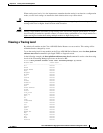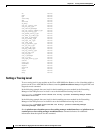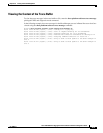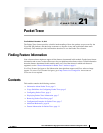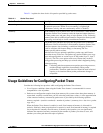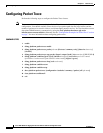
20-3
Cisco ASR 1000 Series Aggregation Services Routers Software Configuration Guide
OL-16506-17
Chapter 20 Tracing and Trace Management
When setting trace levels, it is also important to remember that the setting is not done in a configuration
mode, so trace level settings are returned to their defaults after every router reload.
Caution Setting tracing of a module to the debug level or higher can have a negative performance impact. Setting
tracing to this level or higher should be done with discretion.
Caution Setting a large number of modules to high tracing levels can severely degrade performance. If a high
level of tracing is needed in a specific context, it is almost always preferable to set a single module on a
higher tracing level rather than setting multiple modules to high tracing levels.
Viewing a Tracing Level
By default, all modules on the Cisco ASR 1000 Series Routers are set to notice. This setting will be
maintained unless changed by a user.
To see the tracing level for any module on the Cisco ASR 1000 Series Routers, enter the show platform
software trace level command in privileged EXEC or diagnostic mode.
In the following example, the show platform software trace level command is used to view the tracing
levels of the Forwarding Manager processes on the active RP:
Router# show platform software trace level forwarding-manager rp active
Module Name Trace Level
-----------------------------------------------
acl Notice
binos Notice
binos/brand Notice
bipc Notice
bsignal Notice
btrace Notice
cce Notice
cdllib Notice
cef Notice
chasfs Notice
chasutil Notice
erspan Notice
ess Notice
ether-channel Notice
evlib Notice
evutil Notice
file_alloc Notice
fman_rp Notice
fpm Notice
fw Notice
icmp Notice
interfaces Notice
iosd Notice
ipc Notice
ipclog Notice
iphc Notice
ipsec Notice
mgmte-acl Notice
mlp Notice
mqipc Notice
nat Notice
nbar Notice
netflow Notice



